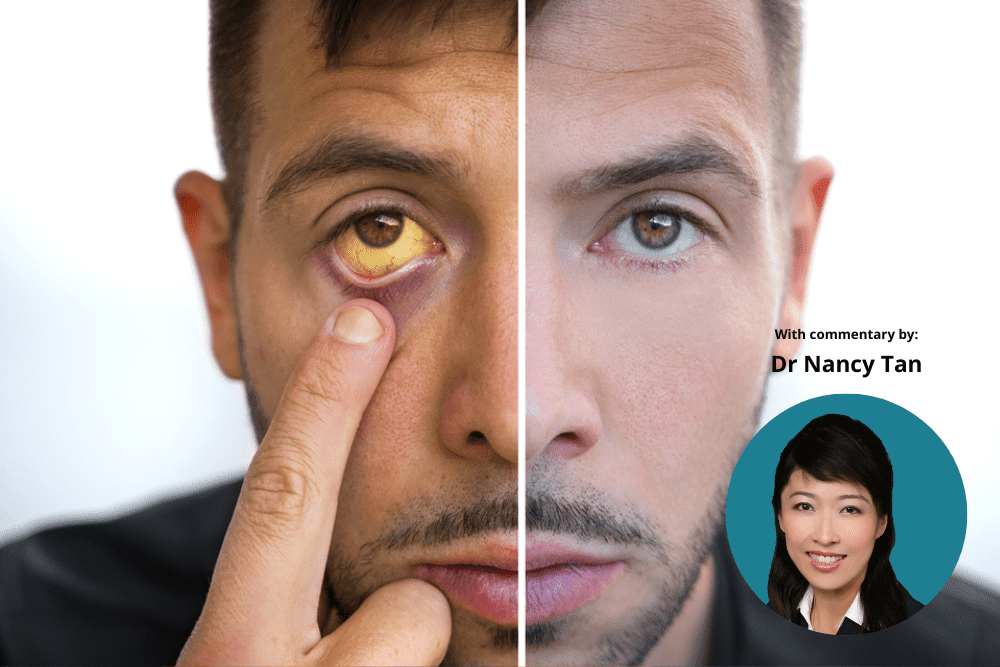Bilirubin, a pigment crucial to the body’s metabolic processes, has been at the centre of increased health discussions in Asia, especially regarding its role in the development of jaundice in newborns.
Dr Nancy Tan, a leading consultant in Gastroenterology, Hepatology, & Nutrition at SBCC Baby & Child Clinic, sheds light on the subject.
Understanding Jaundice. What is It?
Dr Nancy Tan explains: “Jaundice (hyperbilirubinaemia) is a condition where the skin, whites of the eyes, and mucous membranes turn yellow due to a high level of bilirubin, a yellow pigment derived from the breakdown of red blood cells.”
When red blood cells break down, bilirubin forms and needs elimination from the body through the liver and intestines. This metabolism process is vital for overall health.
Causes and Frequency in Newborns
According to Dr Tan, the most frequent causes of jaundice in newborns are physiological, breastfeeding, and blood group or Rh incompatibility between mother and child. “Jaundice is very common, especially in newborns,” Dr. Tan shares. “Up to 60% of term newborns and 85% of premature newborns develop jaundice, usually on the third to fourth day of life.”
Diagnosing Jaundice in Newborns
“Traditionally, this is diagnosed from a blood test taken from a heel prick,” Dr Tan remarks, emphasizing the advancements like transcutaneous bilirubin meters for babies less than 2 weeks old.
Short-Term and Long-Term Effects
Most cases of jaundice are mild and do not result in effects, especially in developed nations like Singapore. “A severe consequence of untreated hyperbilirubinaemia is kernicterus,” Dr. Tan warns, highlighting a rare incidence of 0.4 to 2.7 per 100,000 live births in term and late preterm infants above 35 weeks gestation.
Symptoms and Management
Parents must be aware of crucial symptoms. Dr Tan urges: “Ensure good urine and stool output. If a baby passes stool that is pale yellow or white, please seek medical advice. Do follow up with the doctor if the baby is sleepy, not drinking well, or has a fever.”
Abnormal levels of bilirubin can have implications for health and may indicate underlying conditions:
- Jaundice: When bilirubin levels are elevated, it can lead to a yellowing of the skin and eyes, a condition known as jaundice. Jaundice can be a sign of liver disease, hepatitis, or other conditions affecting bilirubin metabolism.
- Liver Disorders: Elevated bilirubin levels can indicate liver damage or dysfunction. Conditions such as cirrhosis, hepatitis, or liver cancer can affect the liver’s ability to process and excrete bilirubin properly.
- Hemolytic Disorders: Increased breakdown of red blood cells can result in higher levels of bilirubin. Hemolytic disorders, such as sickle cell anaemia or thalassemia, can lead to an excess of bilirubin production.
Treatment and Management
The treatment of abnormal bilirubin levels depends on the underlying cause. It may involve addressing liver disorders, managing hemolytic conditions, or treating any specific conditions affecting bilirubin metabolism. Treatment options can range from lifestyle modifications, medication, to more specialized interventions, depending on the individual case.
Conclusion
Jaundice, while usually benign, must not be ignored, especially in the Asian region where increased incidences have been observed. Understanding its nature, causes, symptoms, and the importance of early diagnosis is crucial. As Dr Nancy Tan emphasises, vigilance, awareness, and medical support can ensure the well-being of infants affected by this condition.

